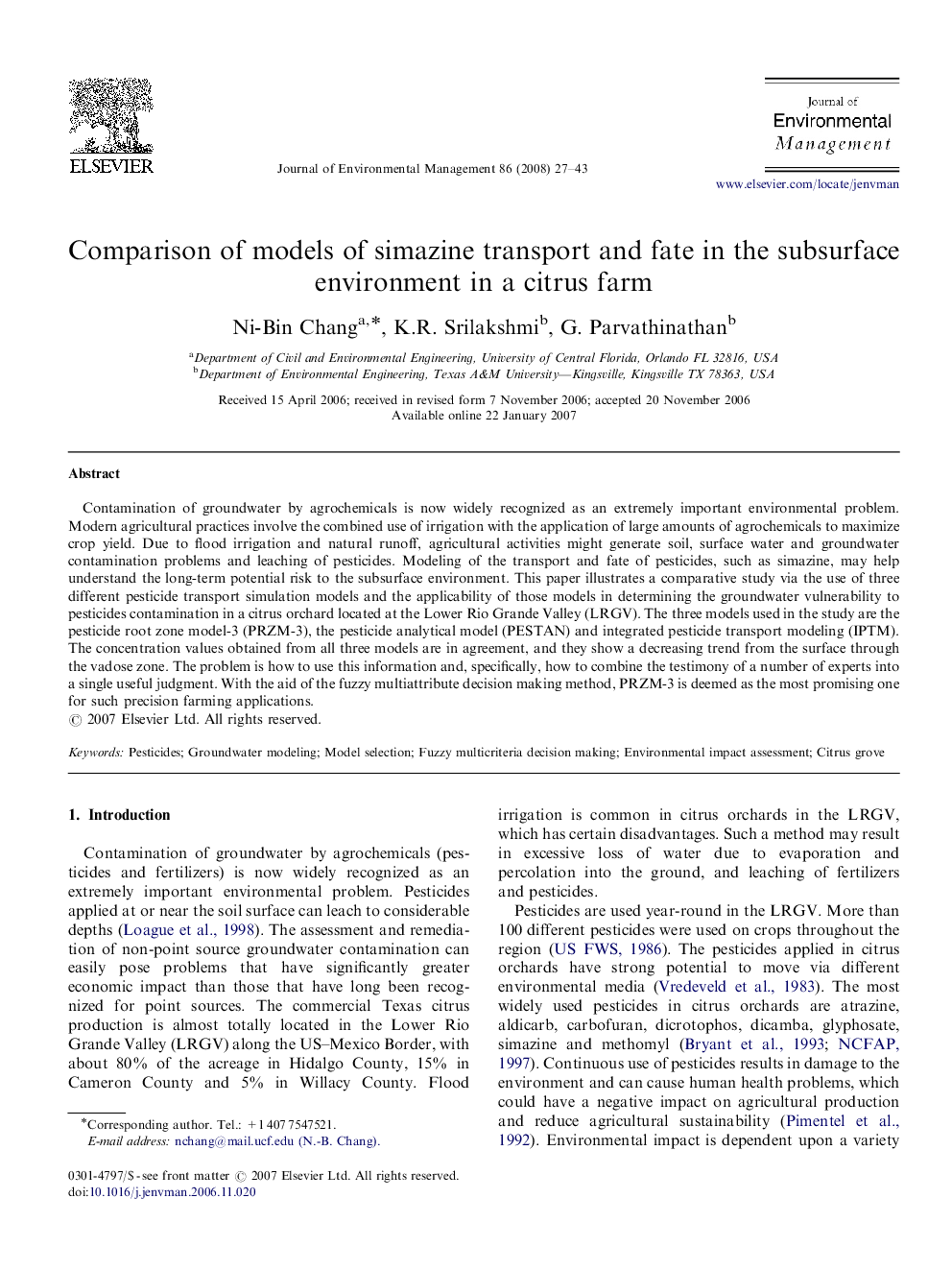| Article ID | Journal | Published Year | Pages | File Type |
|---|---|---|---|---|
| 1058361 | Journal of Environmental Management | 2008 | 17 Pages |
Contamination of groundwater by agrochemicals is now widely recognized as an extremely important environmental problem. Modern agricultural practices involve the combined use of irrigation with the application of large amounts of agrochemicals to maximize crop yield. Due to flood irrigation and natural runoff, agricultural activities might generate soil, surface water and groundwater contamination problems and leaching of pesticides. Modeling of the transport and fate of pesticides, such as simazine, may help understand the long-term potential risk to the subsurface environment. This paper illustrates a comparative study via the use of three different pesticide transport simulation models and the applicability of those models in determining the groundwater vulnerability to pesticides contamination in a citrus orchard located at the Lower Rio Grande Valley (LRGV). The three models used in the study are the pesticide root zone model-3 (PRZM-3), the pesticide analytical model (PESTAN) and integrated pesticide transport modeling (IPTM). The concentration values obtained from all three models are in agreement, and they show a decreasing trend from the surface through the vadose zone. The problem is how to use this information and, specifically, how to combine the testimony of a number of experts into a single useful judgment. With the aid of the fuzzy multiattribute decision making method, PRZM-3 is deemed as the most promising one for such precision farming applications.
